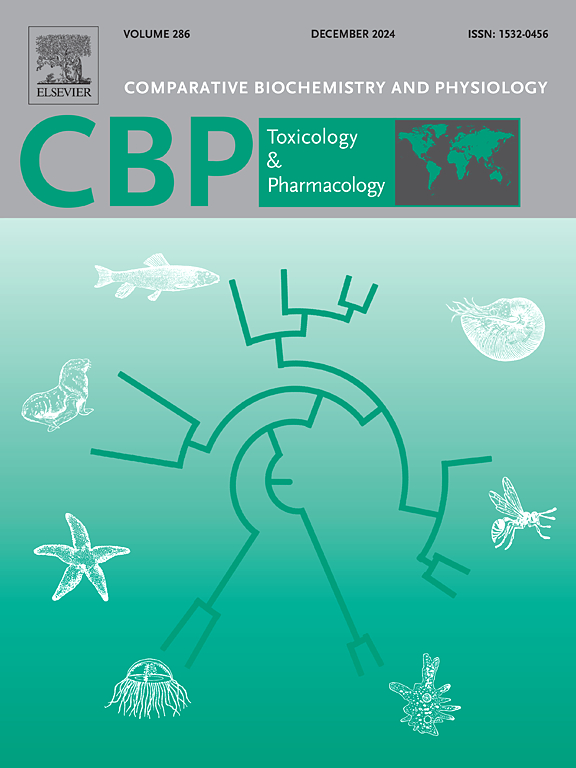Integration of microbiomics and metabolomics reveals energy metabolism imbalance in crucian carp (Carassius auratus) under saline-alkaline exposure
IF 3.9
3区 环境科学与生态学
Q2 BIOCHEMISTRY & MOLECULAR BIOLOGY
Comparative Biochemistry and Physiology C-toxicology & Pharmacology
Pub Date : 2025-02-19
DOI:10.1016/j.cbpc.2025.110145
引用次数: 0
Abstract
The ecological conditions of freshwater aquaculture are deteriorating by degrees in recent years. Consequently, the comprehensive utilization of saline-alkaline water has garnered increasing societal attention. Here, crucian carp (Carassius auratus) were exposed to 20, 40 mmol/L NaHCO3 for 30 days (T, F group). Metabolomic analyses were conducted using UPLC-QTOF/MS, complemented by biochemical and microbiology profiling to elucidate the damage of the saline environment to the intestinal microbial structure, which in turn interfered with the energy metabolism. It was observed that carbonate alkalinity (CA) exposure not only caused intestine oxidative stress but also changed the levels of several digestive enzymes, including α-amylase (AMS), chymotrypsin (CHY), lipase (LPS). Metabolomic analysis identified 22 different metabolites (DEMs) in T group and 77 DEMs in F group. MetaboAnalyst analysis indicated that these metabolites are primarily involved in energy-related pathways, including the citric acid cycle, galactose metabolism, and glycine, serine, and threonine metabolism. Intestinal microbial diversity and community composition were altered under carbonate alkalinity exposure, with increase in Proteobacteria abundance and decline in Firmicutes, abundance alongside enrichment of Sphingomonas. Herein, saline-alkaline stress disrupted the physiological homeostasis of the crucian carp intestine, leading to microbial dysbiosis and energy metabolic imbalance. This study provides a theoretical foundation for understanding the stress response of the crucian carp intestine and the role of the intestinal microbiome in host resilience under adverse environmental conditions.

求助全文
约1分钟内获得全文
求助全文
来源期刊
CiteScore
7.50
自引率
5.10%
发文量
206
审稿时长
30 days
期刊介绍:
Part C: Toxicology and Pharmacology. This journal is concerned with chemical and drug action at different levels of organization, biotransformation of xenobiotics, mechanisms of toxicity, including reactive oxygen species and carcinogenesis, endocrine disruptors, natural products chemistry, and signal transduction with a molecular approach to these fields.

 求助内容:
求助内容: 应助结果提醒方式:
应助结果提醒方式:


